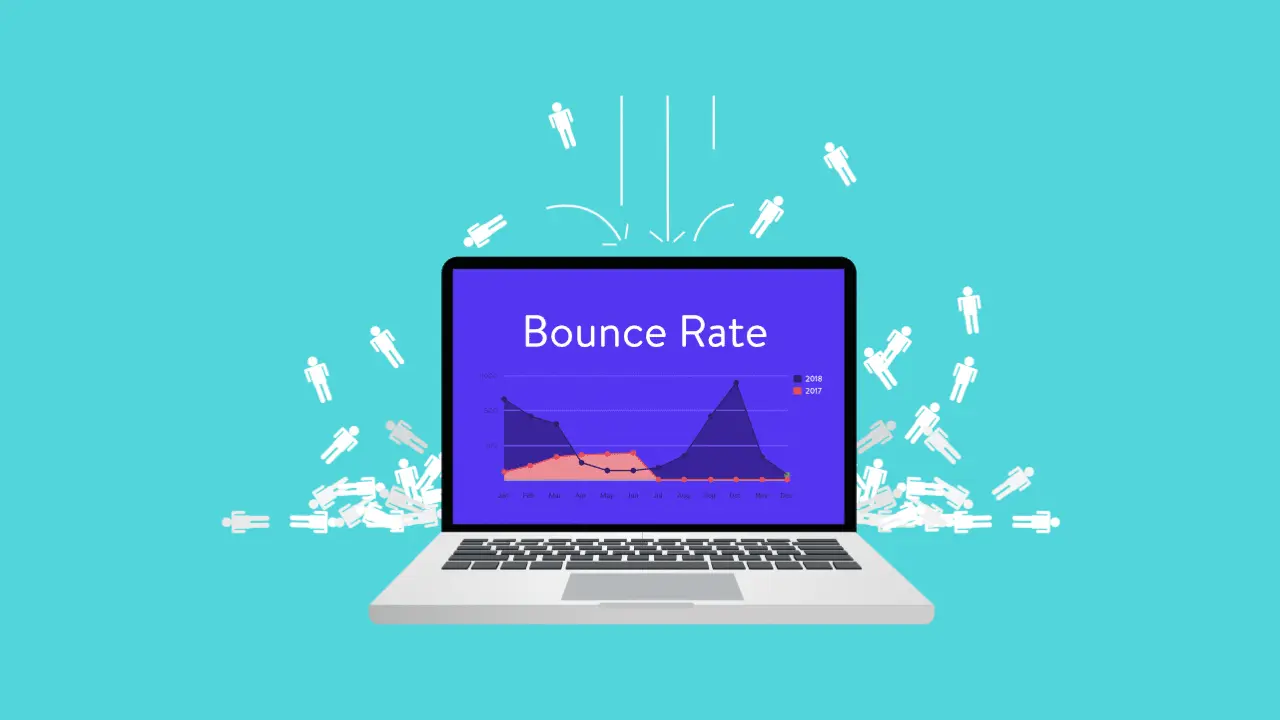
ln the dynamic realm of digital marketing, understanding website user behaviour is crucial for success. One key metric that sheds light on user engagement is bounce rate. But what exactly is bounce rate, and why should it matter to your website’s performance? Hunt Lead is the best digital marketing company in Gurgaon. Buckle up, because this comprehensive guide delves into the world of bounce rate, explaining its significance, exploring strategies to reduce it, and ultimately, helping you optimize your website for better engagement and conversions.
Unveiling the Mystery: What is Bounce Rate?
Bounce rate refers to the percentage of single-page sessions on your website. In simpler terms, it represents the number of visitors who land on a page and leave without interacting further, essentially “bouncing” away from your site. Bounce rate is typically expressed as a percentage. A high bounce rate indicates that a significant portion of visitors aren’t finding what they’re looking for or are encountering issues that prevent them from deeper exploration.
Think of it this way: Imagine your website is a brick-and-mortar store. A high bounce rate translates to customers walking in the door, taking a quick glance around, and leaving without browsing or making a purchase. This scenario suggests a need to improve the in-store experience to encourage engagement and conversions.
Why Does Bounce Rate Matter?
Bounce rate is a valuable metric for several reasons:
- Engagement Indicator: A high bounce rate can signal potential issues with your website’s content, design, usability, or user experience (UX). It indicates that visitors aren’t finding what they need or are encountering roadblocks that hinder them from engaging further.
- SEO Impact: While not a direct ranking factor in search engines, bounce rate can indirectly impact SEO. Google and other search engines consider user engagement a vital factor in search engine rankings. Websites with high bounce rates might be perceived as offering a subpar user experience, potentially leading to lower search rankings.
- Conversion Optimization: A high bounce rate translates to missed conversion opportunities. Whether your goal is lead generation, online sales, or newsletter signups, visitors who bounce are less likely to convert. Analyzing bounce rate helps identify areas for improvement to optimize your website for better conversions.
Decoding the Details: Understanding Bounce Rate Types
Understanding different types of bounce rates provides a more nuanced view of user behavior:
- Standard Bounce Rate: This is the most common type, reflecting the percentage of visitors who leave after viewing only one page.
- Hard Bounce Rate: This metric signifies visitors who leave your website before a page even fully loads, often due to slow loading times or connection issues.
- Soft Bounce Rate: This occurs when a user interacts with a single page (e.g., clicks a link within the page content) before leaving. While technically a bounce, this indicates some level of engagement compared to a standard bounce.
Unveiling the Culprits: Common Causes of High Bounce Rate
Several factors can contribute to a high bounce rate:
- Slow Loading Times: In today’s fast-paced world, patience is a virtue, especially online. If your website takes too long to load, visitors are more likely to bounce out of frustration. Aim for a loading time of under 3 seconds for optimal user experience.
- Poor Website Design: A cluttered, confusing, or visually unappealing website can deter visitors from exploring further. Ensure your website has a clean design, clear navigation, and high-quality visuals to create a positive first impression.
- Mobile Unfriendliness: With the rise of mobile browsing, a website that isn’t optimized for smartphones and tablets is a recipe for a high bounce rate. Ensure your website offers a seamless user experience across all devices.
- Irrelevant Content: If your website content doesn’t match user intent or expectations, visitors will likely bounce. Conduct keyword research to understand what your target audience is searching for and tailor your content accordingly.
- Missing Call to Action (CTA): Tell visitors what you want them to do next! A clear and compelling CTA (e.g., “Contact Us Today,” “Download Our Free Ebook”) can significantly increase engagement and conversions.
Conclusion
By understanding bounce rate and implementing the strategies outlined above, you can significantly improve your website’s user engagement and conversion rates. Remember, bounce rate is just one piece of the puzzle. Continuously analyze your website’s performance, identify areas for improvement, and A/B test different approaches to find what works best for your target audience. By optimizing your website for user experience and engagement, you’ll transform those bounces into loyal visitors and ultimately, drive success for your online presence.
